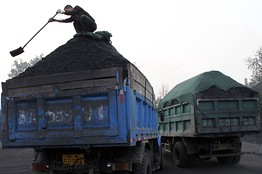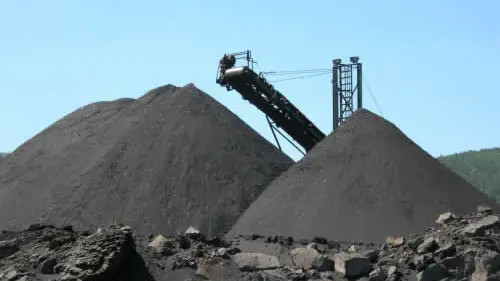Should we be planning for the end of cheap coal?
By
John Timmer | Last updated <abbr class="timeago datetime" title="2010-11-17T20:47:00Z">November 17, 2010 2:47 PM
</abbr>
Arkansas Geological Survey
The recent
IEA report on global energy use trends contained a bit of a surprise. If oil prices remain high and governments make progress on their emissions goals, there's a possibility that the world has already hit peak oil, and that the next few years will see its use plateau for a while before dropping again. Using these same assumptions, the report also said that we could hit peak coal somewhere within the next 20 years. In today's edition of
Nature, a commentary suggests that, even skipping those same assumptions, we may hit peak coal before too long, simply because the best and cheapest sources are vanishing fast.
The authors of the comment unquestionably have an agenda; they come from the
Post-Carbon Institute, which clearly has an interest in promoting consideration of a world that doesn't run on fossil fuels. And that agenda is obvious in the article summary, which concludes, "Energy policies relying on cheap coal have no future."
That appears to be in sharp contrast to various estimates that suggest the world's coal supply is enough to keep us going for up to several hundred years. But the key word in the sentence is "cheap." The authors don't deny that there's a lot of coal left out there—although they say it's less than most people think—but they argue that actually using it will get progressively more expensive, a trend that will ultimately make relying on cheap coal a losing proposition.
The authors provide some pretty simple evidence: for the past couple of decades, the projected global supply has been dropping at a rate faster than consumption, which suggests that there's something off with the projections. They blame advances in geology, which have led a number of nations to decide that some reserves that were once thought to be economically recoverable really aren't. For example, South Africa and Germany, which between them have just under 10 percent of the global reserves, have recently seen their estimated recoverable reserves drop more than a third over a five-year span. There could also be some ugly surprises in this area as well. The US, which has over a quarter of the estimated global reserves, hasn't updated its estimate since the 1970s.
New mining techniques and a higher price on coal could place some of these reserves back on the table, but that partially echoes the authors' point: coal won't stay as cheap as it is now.
Another thing that the authors believe will start boosting the price of coal is a mismatch between the sites of supply and demand. Although global demand is remaining pretty steady, China's demand has skyrocketed and continues to rise. It has significant reserves, but hasn't been able to extract them fast enough to keep up with demand. As a result, China has been increasingly reliant on coal imports from places like Australia and the US, which adds significantly to the cost of coal, both in China and in the domestic markets of the exporters.
Given three more years of its current growth rate, China will be absorbing the entire output of the Asia-Pacific exporters. Complicating matters further, the countries that are currently the leading exporters have relatively small reserves and export capacity. There are some reserves in Russia and Kazakhstan that could help feed China's growing demand but, so far at least, these remain largely untapped.
The last issue presented by the authors is the quality of the coal. According to the commentary, although the volume of coal extracted in the US has continued to go up, the amount of energy extracted hasn't changed significantly since the 1990s (frustratingly, there's no source for this figure). In short, we have to mine more to get the same energy. If this trend kicks in globally, it could have a severe impact on the market.
Things that don't get mentioned by the authors are issues like mine safety and the environmental impacts of both mining and burning the coal. Even if you exclude carbon dioxide emissions, coal is an extremely dirty fuel, and health and safety issues haven't been evenly addressed or enforced. Changes in these matters could significantly impact the cost of coal.
As noted above, the authors clearly have a motivation for getting people to consider a future with lower fossil fuel use. Still, they're certainly not the only ones saying that our assumption of nearly limitless coal may need some serious revision; one paper they cite suggested we may already be at coal's peak.
What the authors would like to see is the prospect of limited and expensive coal get a serious consideration; currently, most energy policy decisions, such as a focus on carbon capture and storage for coal plants, assume that coal will remain cheap enough to compensate for its added costs. Work towards efficiency measures and renewable power is advancing, but not at the pace that could easily handle the time frame in which coal supplies may become constrained. Right now, so little consideration has been given to an end to cheap coal that it's difficult to get a clear picture of what would actually be needed.
As a first step, the authors recommend that the US Geological Survey be tasked with providing a current estimate of the current US coal reserves, and the economic cost of extracting them with current techniques. With a figure that's not 40 years out of date, it might be possible to have a more intelligent conversation about policy considerations.
Nature, 2010. DOI:
10.1038/468367a (
About DOIs).



